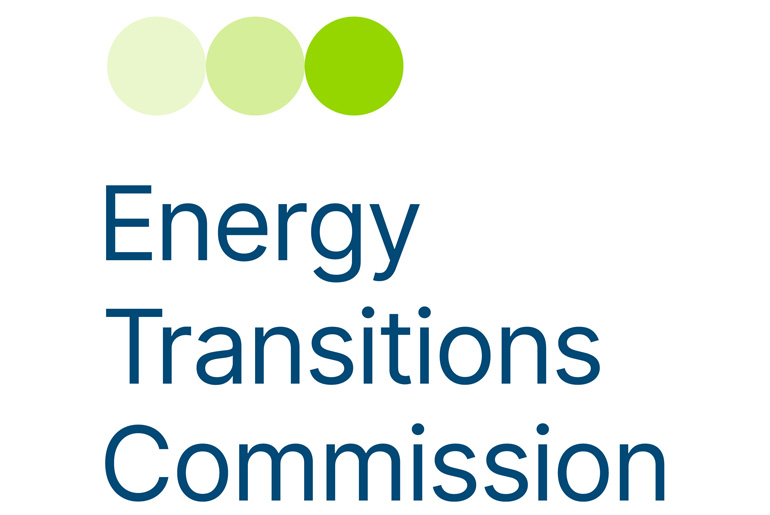The Energy Transitions Commission (ETC) has published its landmark paper, Power Systems Transformation: Delivering Competitive, Resilient Electricity in High-Renewable Systems. The report reveals that wind- and solar-based power systems can deliver electricity at costs equal to or lower than today’s fossil fuel-powered systems in most regions worldwide.
In a decarbonized energy system, electricity is expected to supply up to 70% of the world’s final energy consumption, up from the current 20%. By 2050, the world’s power consumption might triple to 90,000 TWh from the current 30,000 TWh, and additional generation, primarily from solar and wind, would be needed to meet this demand.
A Global Opportunity
The paper reveals that many nations can manage power systems with 70% or more electricity from wind and solar, utilizing proven technology available today, such as battery storage, other energy storage, long-distance transmission, and flexible energy consumption. It draws attention to important regional opportunities:
- “Sun belt” countries—including India, Mexico, and much of Africa—are best positioned to cut power system costs by transitioning to low-cost, solar-led systems, which mainly require day-night balancing.
- In contrast, “wind belt” countries – such as the UK, Germany, and Canada – that rely on higher shares of wind face higher balancing costs, but can still achieve affordable, stable systems through smart policy and innovation.
- In many regions, long-distance transmission lines can be one of the most cost-effective solutions to balancing supply and demand, and should be maximised where feasible.
Rapid electrification of buildings, transport and industries and decarbonisation of power systems must advance together to keep costs per kilowatt-hour affordable for consumers and businesses.
“Multiple technologies, including nuclear and geothermal, may play a role in zero-carbon power systems. But wind and solar will be the dominant source of power in most countries, providing 70% or more of electricity at costs at or below today’s fossil-based systems. In particular, in the global sun belt, the collapsing cost of solar PV and batteries makes possible far cheaper and more rapid growth in green electricity supply than seemed feasible 10 years ago. But wind belt countries can also achieve cost-effective decarbonisation by leading in offshore wind, long-duration storage, and grid innovation.” stated Adair Turner, Chair of the Energy Transitions Commission.
Key Findings:
- It is technically possible for wind- and solar-dominant systems to be stable and resilient with the right mix of balancing and grid technologies. These systems are no more likely to experience blackouts than thermal generation-dominated systems.
- High wind and solar systems can be competitive with today’s wholesale prices and grid costs. Sun belt countries could see costs more than halve to $30-$40/MWh by 2050. Wind-dependent country costs (e.g., UK) are higher, but in the future could be comparable to current levels.
- The “last mile” of decarbonisation will be the most expensive, particularly in countries which need ultra-long duration balancing to meet seasonal variations in supply and demand. Once countries have reached very low levels of carbon intensity (e.g., less than 50g per kWh), electrification is more important than rapid last-mile decarbonisation.
- Up to 30% of all global power demand could be time-shifted through demand-side flexibility. This requires the development of dynamic pricing and the use of smart management technologies.
- Grid costs per kWh can be kept stable. Total global grid length will need to more than double by 2050, reaching around 150–200 million km. Annual grid investment could rise from $370 billion in 2024, peaking at $870 billion in the 2030s. However, ~35% of grid expansion costs (equivalent to $1.3 trillion in Europe1) could be avoided between now and 2050 through the usage of innovative grid technologies.
- Delivering low-cost, high variable renewable energy power systems will require strategic vision and planning, including market reform to put all technologies on a level playing field, grid modernisation enabled by innovative technologies, supply chain development strategies and customer engagement.
“Clean electricity is essential for climate action and is the most affordable way to power economic development. Countries can build resilient economies fit for the future by investing in renewables, grids, and flexibility now. Indeed it is their obligation to do so, according to the recent ICJ advisory opinion. Low-cost, clean power is what people, industry and businesses want. Countries must deliver it now, and this report shows that they can.” stated Christiana Figueres, Founding Partner, Global Optimism.
Policymakers, the power industry, and financial institutions should collaborate to ensure:
- Appropriate planning of high wind/solar systems to expedite planning approvals and minimise deployment bottlenecks.
- Electrification of demand that keeps pace with generation and grid build-out to avoid the cost per kWh increasing for consumers.
- Accelerate power market reforms to unlock investment in critical technologies.
- Address workforce and supply chain bottlenecks to enable delivery at scale.
“Renewables are the core of the global energy transition, delivering clean, reliable, and affordable power. Wind, solar, hydropower, geothermal, storage and modern grids are transforming electricity systems and opening new opportunities for growth, investment, and energy security.”
“To keep this momentum, deployment must advance alongside grid expansion, market reform, and investment. Together, these build competitive, resilient systems that support jobs and economic progress. With governments leading and the private sector supporting, renewables will deliver a clean, secure, and just energy future.” stated Bruce Douglas, CEO at Global Renewables Alliance.
The ETC also published a supplementary briefing, Connecting the World: Long-Distance Transmission as a Key Enabler of a Zero-Carbon Economy, focused on the role of cross-border interconnectors and long-distance transmission in accelerating the energy transition.



